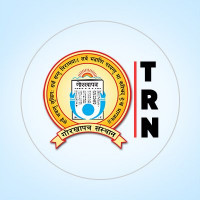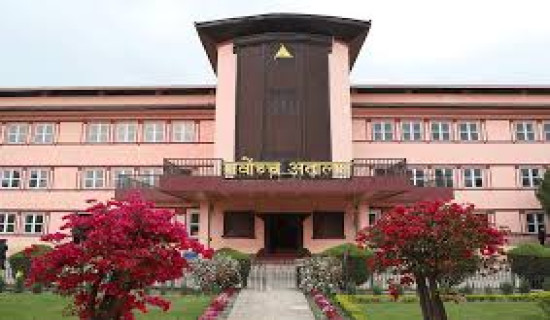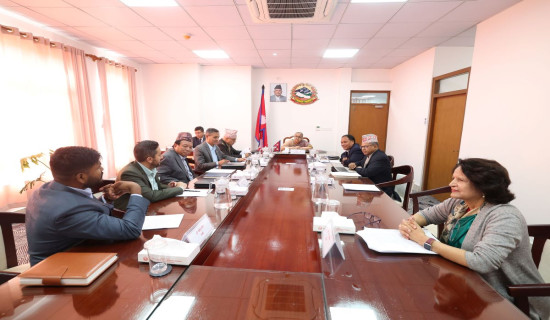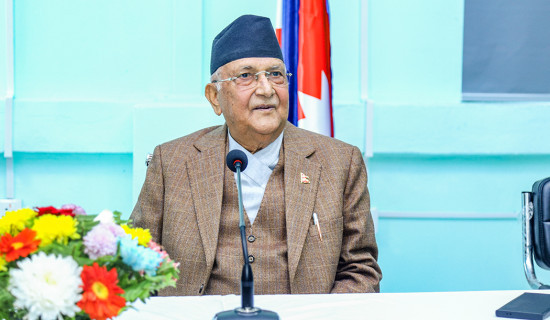- Tuesday, 18 November 2025
Enhancing youths' skill: The foundation to rebuild Nepal
Navin Kishor Gaihre
The two-day movement on September 8 and 9, led by Nepali youths, known as Gen Z, shook the political and administrative system of Nepal to its roots. The Gen Z youths came to the streets demanding that the rule of law be followed, good well-governed and corruption-free country. Unfortunately, the movement had to pay a large price, with over 70 lives lost and hundreds injured. The movement and the sacrifice of the youths will forever be remembered in the history of Nepal. The martyrdom of those brave youths is so glorious and will be written in golden letters. On the other hand, vandalism and destruction of public and private property and historical heritage have left incurable injury behind. All the happenings in Nepal on those two days have brought the huge task of rebuilding the country ahead of us. But this isn't just about renovating burned buildings and fixing damaged infrastructure. It's about rebuilding the very foundation of the country - the economy, the society, and, most importantly, the future of the youth. To do this successfully, everyone needs to think differently. A powerful engine - Technical and Vocational Education and Training (TVET) is needed to change the state of the country.
The high price paid for this movement gives us a large responsibility. Everyone - the government, private companies, and all parts of society must contribute to the rebuilding. The rebuilding must be real and lasting. It needs to be built on a strong foundation that creates its own growth, opportunities, and stability. This is why TVET should not be seen as just a type of education. It must become a top national priority of Nepal.
The Problem with the Current Education System
For a long time, the main goal for students in Nepal has been to follow a traditional academic path. While this path is valuable, it has created a big problem. A young person often enters the job market around the age of 20. They may have a lot of theoretical knowledge from books, but lack the specific, practical skills that employers are desperately looking for.
This creates a sad and confusing situation. Many university graduates cannot find jobs, while at the same time, industries cannot find the skilled workers they need to grow. This leads to frustration and forces many of the best and brightest youths to leave the country seeking work elsewhere.
How TVET Provides the Solution
TVET breaks this frustrating cycle. It creates a clear and powerful chain of progress where Education is directly linked to learning a practical skill. The skill is linked to labor (the ability to do a specific job). The labor is linked to employment (getting a job). Employment is linked to income (earning money). And the income is then linked to investment (spending money in the local economy or starting a business). This chain could only bring a sustainable and credible reconstruction of Nepal.
Let’s imagine how this works for a young person. After finishing school, they enroll in a TVET program. They don't just come out with a certificate; they come out as a certified electrician, a solar panel technician, a skilled carpenter, a healthcare assistant, or an IT expert. They have a tangible skill that is immediately valuable.
These skilled workers can then get jobs in important rebuilding projects - constructing disaster-resistant infrastructures, installing renewable energy systems, integrating IT into the public services, or working in a revived tourism industry. This job provides them with a reliable income. This income allows them to support their families, improve their homes, and spend money in their local communities. Some might even save enough to start their own small business, creating jobs for others. This cycle creates a loop of economic activity that strengthens itself and brings stability.
The Four-Pillar Mission for a TVET Revolution
For reconstruction to be fast, credible, and sustainable, Nepal must focus on a mission to revolutionize its TVET sector. This mission stands on four critical pillars:
1. Restructuring TVET Institutions: Make Training Relevant
We must move away from outdated courses and textbooks. Training programs must be designed around the actual needs of Nepal’s rebuilding economy and the global job market. We need to teach modern skills like: Modern construction techniques and disaster-resilient engineering; Agro-processing to add value to the agricultural products; Information Technology and software development; Hospitality and tourism management.
This restructuring requires strong Public-Private Partnerships (PPPs). This means industries and businesses must be involved in designing the curricula. They can also provide apprenticeship opportunities so that students can learn on the job. This ensures that graduates are truly "job-ready" from their first day of work.
2. Ensuring Quality: Make Training Trusted
A restructured system is useless if the quality is poor. We must invest heavily in the infrastructure of TVET institutions. This includes building modern workshops, labs, and providing the latest technology for students to train.
Most importantly, we must invest in the instructors. TVET teachers need to be among the best-trained professionals. They need regular training themselves to stay updated on the latest tools and technologies. We also need strong national skill standards and a system to measure quality. This will ensure that every TVET graduate carries a certificate that employers can trust completely.
3. Establishing Industries: Create the Jobs
There is no point in training thousands of skilled young people if there are no jobs for them to do. This would only lead to more frustration. The government must actively create a welcoming environment for both domestic and foreign investment.
This can be done through policy reforms, tax incentives, and making it easier to start and guarantee a secure environment to run a business. We need to establish new industries and help existing ones grow, especially in sectors like manufacturing, IT outsourcing, agriculture value-addition, and renewable energy. This creates the demand that absorbs the supply of skilled TVET graduates.
4. Creating Opportunities at Home: Retaining Youths in Nepal
The ultimate goal of this TVET-led reconstruction is to stop the heartbreaking exodus of the youths to foreign countries. Youths are Nepal's most valuable asset. They must be provided with a compelling reason to stay and build their futures in Nepal. This means creating clear career paths for youths so they can grow and advance. It means fostering a culture of entrepreneurship where youths are supported to start their own businesses. It means building an ecosystem where youth’s skills are genuinely valued, respected, and fairly rewarded.
Honoring the Sacrifice with Action
The sacrifice of the Gen Z revolutionaries was a demand for dignity, opportunity, and a nation that works for everyone. Honoring that sacrifice requires a practical, powerful, and inclusive plan of action to rebuild Nepal.
By placing Technical and Vocational Education and Training as a priority of the national strategy, building a new nation can be done. The raw potential of the youths will be transformed into tangible skills, and their despair will turn into hope. It is time for all - the government, the private sector, educators, and citizens - to stand up and get to work in this direction.
(Writer Gaihre is the Principal at Korea Nepal Polytechnic Institute in Butwal.)



-original-thumb.jpg)





-original-thumb.jpg)






